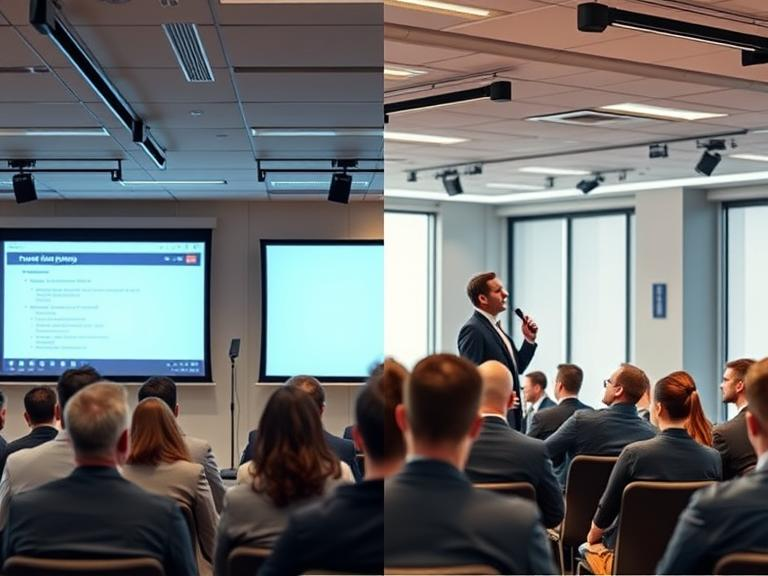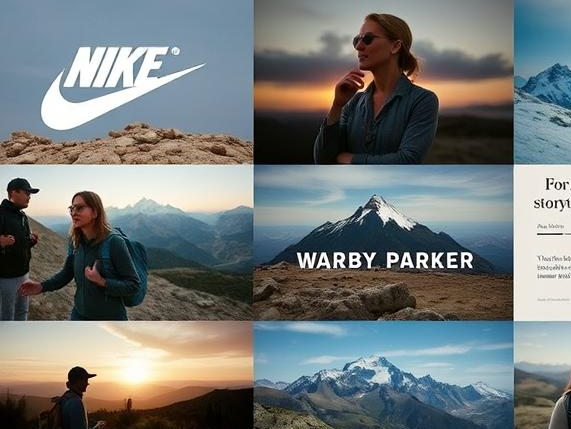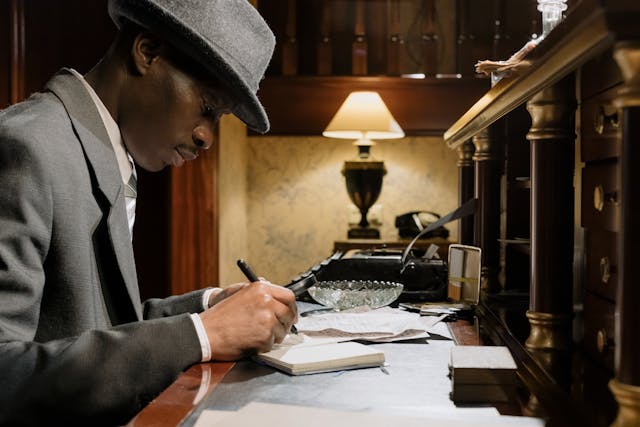You know that feeling when someone shares a work story that just clicks? Like, you’re nodding along, thinking, Finally! Someone gets it. That’s the power of workplace storytelling techniques. The surprising part is that most people don’t use them. They stick to dry reports, boring presentations, and emails that make you want to cry.
Big mistake.
If you want people to listen, understand, and actually care about what you’re saying, you need stories. Good stories. The kind that sticks. The kind that makes people remember you.
And guess what? You already have great stories. You just need to start telling them.
Why Workplace Storytelling Techniques Matter More Than You Think

Let me paint a picture for you.
Imagine two people giving a presentation.
Person A shares a bunch of stats and bullet points. It’s technically correct, but no one’s really paying attention. Some guy in the back is checking his phone.
Person B tells a short, powerful story about a mistake they made, how they fixed it, and what they learned. The room is silent. Everyone is hooked.
Who do you think people will remember?
That’s the power of workplace storytelling techniques. Stories turn information into emotion. And emotion makes people act.
Now, before you say, “But I’m not a storyteller!”, relax. You don’t have to be a novelist. You just have to know how to tell a good work story.
The Science Behind Workplace Storytelling

It’s not just a “nice” thing. It’s brain chemistry.
When you tell a great story, people’s brains release oxytocin, the same chemical that makes us trust and connect with others. It’s why business storytelling examples work so well in marketing, leadership, and even job interviews.
And guess what? Stories make facts 22 times more memorable than raw data. (Yes, that’s a real stat.)
So, if you want your ideas to stick, stop listing facts. Start telling stories.
How to Tell a Work Story People Actually Want to Hear

Alright, let’s get practical. How do you use workplace storytelling techniques in real life?
1. Start with a “Wait, what?” moment
Boring stories start with “So, last quarter, we saw a 10% increase in…”
Good stories start with “I thought I was about to get fired.”
See the difference? You need an attention hook. Something unexpected. Something that makes people lean in.
Maybe it’s a big mistake. A weird client request. A total disaster. Anything that makes people think, Tell me more.
2. Keep it simple
Nobody wants a 10-minute TED Talk in the middle of a meeting. Keep it short, clear, and human.
Good rule of thumb: If you wouldn’t tell it at a party, don’t tell it at work.
3. Show, don’t tell
Bad: “We faced a tough situation.”
Good: “Our biggest client called at 5 PM on a Friday. They were furious. And they wanted a solution by Monday.”
See the difference? One is meh. The other puts you inside the story.
Details make it real. Make people feel like they were there.
4. Use Real People, Not Just “The Team”
Bad: “Our team worked hard to solve the problem.”
Good: “Lisa pulled an all-nighter, Mark found a loophole in the contract, and I somehow convinced the client to give us 48 more hours.”
Why? Because people remember people. If you want your story to stick, make it personal. Names, roles, and emotions bring your story to life.
5. Add Conflict, Every Great Story Needs It
A story without conflict is just a timeline. No one cares.
Bad: “We launched the project, and it was a success.”
Good: “Halfway through, our supplier bailed. We had 48 hours to find a new one or lose everything. Then, Sarah had a wild idea…”
See? Tension keeps people hooked. Build it up before the resolution.
6. Use the “And Then What?” Test
Imagine you’re telling your story to a friend. If they don’t feel the urge to ask “And then what?” At any point, your story is too flat.
Add moments where the stakes increase.
- Something unexpected happens.
- A decision must be made.
- A risk is taken.
That’s what keeps people engaged.
7. Inject a Bit of Humor (If It Fits)
Not every story has to be dramatic. Humor makes your story relatable and memorable.
Bad: “We had a small tech issue.”
Good: “Our website crashed on Black Friday. Our IT guy, who swore he never panics, was literally Googling ‘how to fix a website fast.’”
Even in serious moments, a little humor makes stories feel human.
8. End with a “Mic Drop” Moment
A weak ending ruins a strong story. Avoid:
- “And yeah, that’s what happened.”
- “So… yeah.”
Instead, leave them with a punchline or takeaway:
- “And that’s how we turned a disaster into our biggest win of the year.”
- “Lesson learned: Never assume your mic is off.”
A good ending makes people remember you. Nail it.
9. End with the lesson
Every great story teaches something. Don’t just tell what happened, explain what you learned.
Did you figure out a smarter way to handle a problem? Did you change how you work? Did your team bond over it?
That’s the part people remember. That’s what makes a story valuable.
Real Business Storytelling Examples (So You Can Steal the Technique)

Okay, enough theory. Let’s see business storytelling examples in action.
Business storytelling examples can make or break a brand. When done right, they connect with audiences on an emotional level, making the brand unforgettable. When done wrong… well, just ask Pepsi.
Let’s look at 5 business storytelling examples that didn’t just sell products but created lasting brand legacies.
1. Nike – “Just Do It”
Nike is the undisputed king of storytelling. Their “Just Do It” campaign launched in 1988 and has evolved into one of the most powerful business storytelling examples in history.
Nike doesn’t just sell shoes; they sell motivation, determination, and grit. Their ads feature everyday people and elite athletes, all pushing their limits. The message? Anyone can be an athlete. You just have to “do it.”
- Simple but powerful tagline: “Just Do It” applies to sports, work, and life.
- Emotional connection: Nike taps into human ambition and struggle.
- Consistency: The message remains the same across decades.
A great business story is timeless and adaptable.
2. Patagonia – “Don’t Buy This Jacket”
Imagine a clothing brand telling you not to buy their product. That’s exactly what Patagonia did in 2011 with their “Don’t Buy This Jacket” campaign. It was a bold move, but it worked.
Patagonia challenged consumerism while highlighting their commitment to sustainability. They admitted that making their jackets had an environmental cost, urging people to buy only what they truly needed. The campaign positioned Patagonia as a leader in ethical fashion, attracting eco-conscious customers.
- Authenticity sells: People trust brands that are honest.
- Taking a stand makes you memorable: Patagonia’s activism strengthens customer loyalty.
- Reverse psychology works: Telling people not to buy can drive demand.
A bold, counterintuitive story can set you apart.
3. Warby Parker – “How Warby Parker Glasses Are Made”
Warby Parker didn’t just introduce affordable glasses; they built a brand story around accessibility and ethics. Their storytelling focuses on transparency, showing exactly how their glasses are made and why they cost less.
The brand took a complex process (glasses manufacturing) and turned it into a human, engaging story. They highlighted their buy-one-give-one program, where every purchase helps someone in need.
- Transparency builds trust: Customers love knowing where their products come from.
- Stories make facts interesting: Instead of listing specs, Warby Parker tells a journey.
- Social impact matters: People support brands that do good.
Customers don’t just buy products; they buy stories and values.
4. Thinx – “MENstruation”
Thinx, a brand that sells period-proof underwear, tackled taboos and social change with their “MENstruation” campaign. The ad imagined a world where everyone, including men, had periods.
By flipping gender roles, Thinx made people rethink period stigma. The campaign didn’t just sell underwear, it sparked conversations about menstrual equity and innovation.
- Challenging norms makes an impact: Controversial stories get attention.
- Relatable storytelling wins: Everyone knows someone affected by period stigma.
- Empowering messages create loyalty: Customers love brands that fight for change.
Business storytelling isn’t just about selling; it’s about shaping culture.
5. Land Rover – “The Land of Land Rovers”
Land Rover took storytelling beyond advertising with their documentary-style film, The Land of Land Rovers. It follows a Himalayan community that relies on Land Rovers for survival.
Instead of just saying “our cars are durable,” Land Rover showed it. The video features real people using their cars in extreme conditions, proving their reliability.
- Show, don’t tell: Real-life stories are more powerful than product claims.
- Authenticity matters: Featuring real users builds credibility.
- Story-driven branding lasts longer: This campaign feels like a National Geographic special, not an ad.
The best business storytelling examples feel real and personal.
The Biggest Storytelling Mistakes (And How to Avoid Them)
Alright, quick warning. Not all stories are good stories. Here’s what to avoid:
- Too much detail: Nobody needs a play-by-play of your entire day. Get to the point.
- No clear lesson: If your story has no takeaway, people will just wonder why you told it.
- Bragging too much: If your story is just “Look how amazing I am!”, people will tune out.
- Forgetting your audience: Tailor your story to the people you’re talking to.
Keep it short, clear, and useful, and you’ll be golden.
Final Thoughts: Start Telling Stories Today
If you want to be memorable, persuasive, and engaging at work, storytelling isn’t optional, it’s essential. Facts alone won’t inspire action, but a well-told story will. Whether you’re leading a team, pitching an idea, or writing an email, incorporating workplace storytelling techniques makes your message stick.
Remember:
- Hook your audience with a surprising opening.
- Keep it short, clear, and relatable.
- Show, don’t just tell, use real people and details.
- Build tension and conflict before the resolution.
- End with a strong takeaway that reinforces your point.
Start small. Share a quick story in your next meeting, presentation, or email. The more you practice, the more natural it becomes. Soon, you’ll notice people paying attention, remembering your ideas, and even quoting your words. That’s the power of workplace storytelling techniques, and it’s time you start using it.
Want to improve your storytelling skills? Stay tuned for more tips and business storytelling examples that you can apply immediately.





